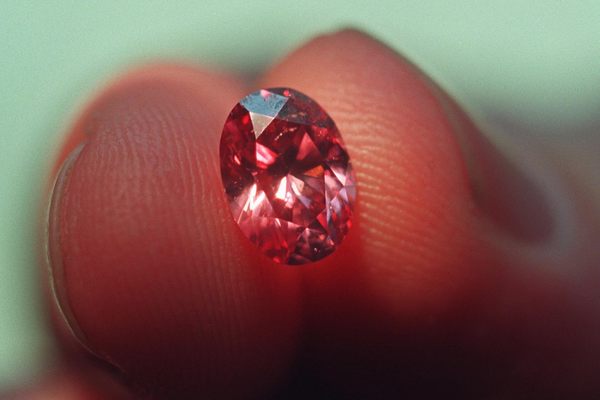40 Years Ago, Okinawans Returned to Driving on the Left
A stone monument marks this symbolic last moment of post-WWII repatriation.

Ishigaki-jima, an island in Japan’s southern Okinawa prefecture, is best known for its immaculate beaches and waving fields of sugarcane. But it also plays host to one of the more curious remnants of Japan’s post-war occupation by U.S. forces. Nestled in the island’s bustling city center is the 730 Monument. It commemorates July 30, 1978, the day Okinawa’s motorists switched from driving on the right-hand side of the road to the left.
While post-war U.S. control of mainland Japan ceased in 1952, American administration of the Okinawan islands continued until 1972, owing to the provisions of the Treaty of San Francisco. This would have allowed for the potential permanent trusteeship of Okinawa, although this was ultimately not what happened. Among other Americanisms adopted by Okinawa during that time—such as an abiding love of A&W restaurants and SPAM—was the requirement to drive on the right, in contrast to the rest of Japan.
With the Vienna Convention on Road Traffic entering into force in 1977, and earlier 1949 Geneva Convention on Road Traffic, both requiring member states to have a uniform traffic direction throughout the country, post-occupation Japan was obliged to bring Okinawa in line with the rest of the country and international practice. Owing to assorted bureaucratic wrinkles, however, it was not until 1978 that Okinawa finally made the switch to left-hand drive.

To commemorate this change, the town office of Ishigaki created in September 1978 the 730 Monument, a simple three-foot high stone memorial named for the date when traffic switched over. The stone is flanked by two shisa lion-dog statues—symbols of good luck on the islands—and rests on a base of traditional white Okinawan mortar. Its distinctive red, white, and blue stylized logo of the switch from right-to-left-hand driving has come to feature prominently on the island’s road signs and souvenirs. Indeed, on an island with no shortage of historical landmarks, the 730 Monument enjoys continued popularity with both foreign and domestic visitors to the archipelago.

The switch to left-hand drive was not without hiccups. “Chaos and fender-benders,” is how Ishigaki native Yu Hirachi recounts her parents’ experience in the immediate aftermath of the traffic switch in 1978. Indeed, contemporary newspaper reports observed a number of accidents in Okinawa attributable to the switch, despite the best efforts of local officials.
But the 730 Monument reflects something deeper than just a change in traffic direction; it represents the last step of Okinawa’s repatriation to Japan.
That return to Japan was not a simple task. Prior to 1972, Ms. Hirachi notes the islands issued their own postage stamps, and passports were required for native Okinawans to travel to the main islands of Japan; issues that had to be addressed in rejoining the rest of the country. Strict quarantines were also observed for those in Japan traveling to and from the islands.
At a busy junction in Ishigaki’s town center, the monument is now maintained by student volunteers from nearby schools who gather each year ahead of July 30. Tourists still stop by in droves, often resting in the shade of palm trees while enjoying a cold glass of freshly pressed sugarcane juice from nearby vendors. While the 730 Monument pays tribute to a quirky moment in broader Japanese history, for island residents it serves as an important reminder of Okinawa’s symbolic return to Japan.















Follow us on Twitter to get the latest on the world's hidden wonders.
Like us on Facebook to get the latest on the world's hidden wonders.
Follow us on Twitter Like us on Facebook